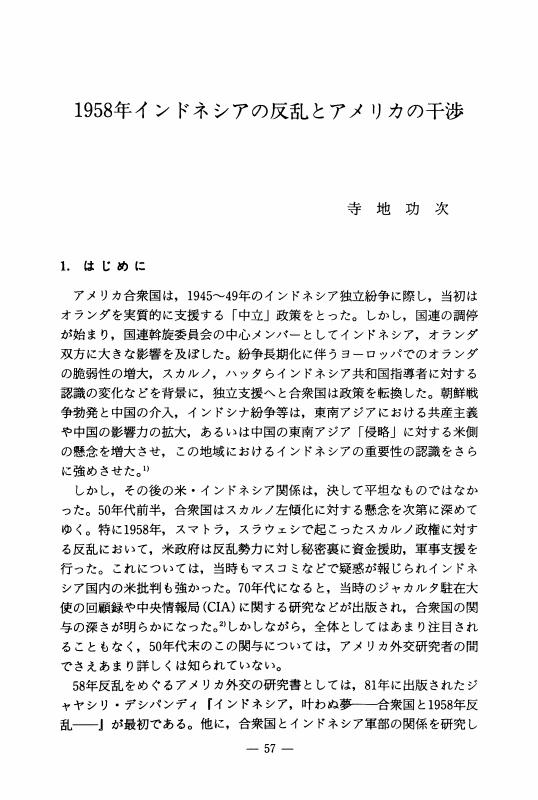2 0 0 0 OA ラオス紛争とアメリカ :「ベトナム戦争」前史としてのラオス紛争
- 著者
- 寺地 功次 Koji Terachi
- 雑誌
- 共立国際研究 : 共立女子大学国際学部紀要 = The Kyoritsu journal of international studies
- 巻号頁・発行日
- vol.38, pp.105-118, 2021-03
This paper is the final part of the author’s study on U.S. involvement in Laos from the end of World War II through the middle of the 1960s. It reviews U.S. policy toward Laos during this period and examines the numerous setbacks and failures that the U.S. had experienced in executing its policy in Laos.U.S. policy toward Laos was characterized by the following features: overemphasis on internal security with abundant military assistance to Laos, lop-sided reliance on the Lao military in influencing the conflict with the communist and neutralist forces and, subsequently, disregard for the democratic process in Laos. The U.S. freely intervened in the internal affairs of Laos, and supported military coups against the civilian government and the rightist military faction in the Laotian civil war. However, the U.S. never succeeded in maintaining the anti-communist conservative government it favored in Laos.The U.S. experienced its successive failures in Laos before its military involvement in Vietnam bogged down in the late 1960s and the early 1970s. The U.S. withdrew its military personnel from Laos when an international agreement on the “neutralization” of Laos was achieved in Geneva in 1962. However, the U.S. began its air war against the communist Pathet Lao force and the Ho Chi Minh Trail within Laos in the middle of 1964 before it started its extensive bombing campaign in Vietnam in 1965. The U.S. involvement in Laos followed the path of an “intervention, failure and withdrawal” pattern, which was to be repeated tragically in Vietnam. The U.S. involvement in Laos could be regarded as a prelude to its involvement in Vietnam.
1 0 0 0 OA 1958年インドネシアの反乱とアメリカの干渉
- 著者
- 寺地 功次
- 出版者
- アメリカ学会
- 雑誌
- アメリカ研究 (ISSN:03872815)
- 巻号頁・発行日
- vol.1996, no.30, pp.57-77, 1996-03-25 (Released:2010-11-26)
- 参考文献数
- 120
